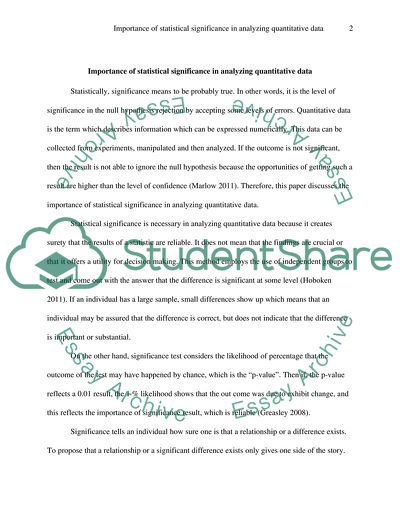Cite this document
(What is the importance of Statistical Significance in Analysing Essay Example | Topics and Well Written Essays - 1250 words, n.d.)
What is the importance of Statistical Significance in Analysing Essay Example | Topics and Well Written Essays - 1250 words. https://studentshare.org/statistics/1801757-what-is-the-importance-of-statistical-significance-in-analysing-quantitative-data
What is the importance of Statistical Significance in Analysing Essay Example | Topics and Well Written Essays - 1250 words. https://studentshare.org/statistics/1801757-what-is-the-importance-of-statistical-significance-in-analysing-quantitative-data
(What Is the Importance of Statistical Significance in Analysing Essay Example | Topics and Well Written Essays - 1250 Words)
What Is the Importance of Statistical Significance in Analysing Essay Example | Topics and Well Written Essays - 1250 Words. https://studentshare.org/statistics/1801757-what-is-the-importance-of-statistical-significance-in-analysing-quantitative-data.
What Is the Importance of Statistical Significance in Analysing Essay Example | Topics and Well Written Essays - 1250 Words. https://studentshare.org/statistics/1801757-what-is-the-importance-of-statistical-significance-in-analysing-quantitative-data.
“What Is the Importance of Statistical Significance in Analysing Essay Example | Topics and Well Written Essays - 1250 Words”. https://studentshare.org/statistics/1801757-what-is-the-importance-of-statistical-significance-in-analysing-quantitative-data.


